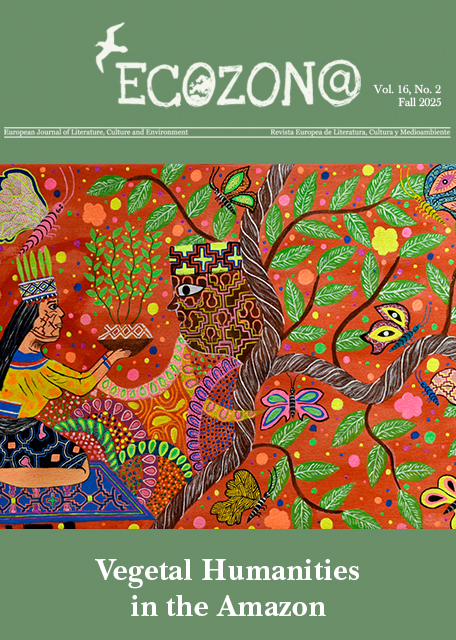Le Christianisme et l'Animal: Une Histoire Difficile.
DOI:
https://doi.org/10.37536/ECOZONA.2011.2.2.422Parole chiave:
animal, christianity, history, representationAbstract
Christianity has given a great deal of thought to animals in its effort to situate Man with regard to Creation, and to forge a mental image of the latter. This task was carried out by relying on the Bible, particularly the Old Testament, though its often unclear and elliptical treatment of animals also led theologians to call on the Greek philosophers to interpret it. This move was to eventually impose the obvious and presumably "natural" idea of Man's divine origin and that of the inferiority of animal creatures. The animal got reduced to a material, mortal being bereft of any afterlife, destined to materially service human beings, or perhaps even to yield spiritual support to them by helping them to think of God. It was not until the 18th and 19th centuries that a minority of clerics, pastors and faithful, most often Protestants, though joined later by a lesser number of Catholics, sought to re-evaluate the animal from a Christian perspective, by reconsidering its nature, fate and role at Man's side. They thus deconstructed a conception constructed by history, one which was actually incongruent with Christianity. In accordance with Durkheim's model of religion, such changes are not of a theological but social and cultural nature, Christianity serving in this process both as a reflection and a justification of ideas extraneous to it.
El cristianismo ha meditado mucho sobre el animal para situar al hombre en la creación y para pensar en ella. Esto lo hace basándose en la Biblia, principalmente en el Antiguo Testamento, aunque su contenido a menudo es poco concreto y elíptico sobre los animales, lo cual ha llevado a los teólogos a ayudarse de teorías filosóficas griegas para interpretarlo. Dicho proceso poco a poco ha impuesto la convicción evidente, es decir, "natural", del origen divino del hombre y de una inferioridad del animal, considerado como una criatura material, mortal, sin futuro en el más allá, consagrado a servir de forma material a los hombres, incluso ayudándoles a nivel espiritual y para pensar en Dios. Sólo a partir de los siglos XVIII y XIX una minoría de clérigos, pastores y fieles, principalmente protestantes aunque también católicos en menor número y de forma más tardía, inició una revalorización cristiana del animal. Dichas voces minoritarias también han considerado la naturaleza del animal, su futuro y su papel junto al del hombre, desmontando así un concepto históricamente construido, para nada consustancial al cristianismo. Dichas teorías evolutivas no tienen un origen teológico sino social y cultural, el cristianismo sirve de eco y apoyo según el modelo durkheimiano de las religiones.
Le christianisme a beaucoup pensé l'animal pour situer l'homme dans la création et pour penser celle-ci. Cela a été fait en s'appuyant sur la Bible, notamment sur l'Ancien Testament, mais dont le contenu souvent incertain, elliptique à propos des animaux, a incité les théologiens à s'aider des philosophies grecques pour l'interpréter. Cette démarche a peu à peu imposé la conviction évidente, « naturelle », de l'origine divine de l'homme et d'une infériorité de l'animal, considéré comme une créature matérielle, mortelle, sans avenir dans l'au-delà, vouée à servir matériellement les hommes, voire à les assister spirituellement en les aidant à penser à Dieu. Ce n'est qu'à partir des XVIIIe-XIXe siècles qu'une minorité de clercs, de pasteurs et de fidèles, surtout des protestants mais aussi des catholiques en moindre nombre et plus tardivement, a entamé une revalorisation chrétienne de l'animal. Ces voix minoritaires ont reconsidéré aussi bien la nature de l'animal que son avenir et son rôle à côté de l'homme, déconstruisant ainsi une conception historiquement construite, en rien consubstantielle au christianisme. Ces évolutions ne sont pas d'origine théologique mais sociale et culturelle, le christianisme servant d'écho et de caution selon le modèle durkheimien des religions.
Downloads
##submission.downloads##
Pubblicato
Fascicolo
Sezione
Licenza
Authors who publish with this journal agree to the following terms:
a) Authors retain copyright and grant the journal right of first publication with the work simultaneously licensed under a Creative Commons Attribution License that allows others to share the work with an acknowledgement of the work's authorship and initial publication in this journal (CC BY-NC for articles and CC BY-NC-ND for creative work, unless author requests otherwise.
b) Authors are able to enter into separate, additional contractual arrangements for the non-exclusive distribution of the journal's published version of the work (e.g., post it to an institutional repository or publish it in a book), with an acknowledgement of its initial publication in this journal.
c) Authors are permitted and encouraged to post their work online (e.g., in institutional repositories or on their website) prior to and during the submission process, as it can lead to productive exchanges, as well as earlier and greater citation of published work (See The Effect of Open Access).










